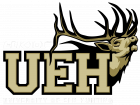
MODULE 6 - ELK HUNTING KNOWLEDGE
CHAPTER 1: OVERVIEW OF ELK BEHAVIOR

Elk are incredibly tough, adaptive animals. They survive in an environment that is continually throwing struggles into their path. Extreme heat, extreme cold, long winters, lack of feed, lack of water, human encroachment, predators – any of these challenges can contribute to or cause death for an elk. Elk often face these challenges throughout the year, and they sometimes face multiple hazards and threats at the same time. It is their will to survive, coupled with sharply honed survival skills and instincts, that keeps them alive day after day, and year after year. In order for us to have a chance of successfully hunting an elk, our will to succeed needs to overcome their desire to survive.
The behaviors, patterns, and habits of elk change from area to area. In environments where harsh winters aren’t a concern, elk don’t have to migrate out of the high country to find winter feed. In lush, high mountain habitats, they might not be as focused on hitting a consistent water source as they would be in a desert climate. However, elk have the same basic needs regardless of where they live. Their acquisition of these needs might come through greater burden in one area versus another, but they will still be seeking the same basic things: food, water, and security.
Their habits throughout the year are heavily dependent upon their ability to find these three basic elements of survival. In addition to these three elements, I’ll also add two more “events” that have an impact on an elk’s behavior throughout the year: the birth of calves, and the rut.
A YEAR IN THE LIFE OF AN ELK
I’ll begin my outline of the ‘Year in the Life of An Elk’ at the end of the elk rut. As the rut winds down, the bulls move off to thick areas where they can hide and recover from the physical toll of the previous months. They will usually find an area that offers their three basic needs in relatively close proximity to reduce the amount of travel they have to do. It is not uncommon for a mature bull elk to hang out alone or in very small groups during this time, and to stay within a very small geographic area, travelling only short distances to feed and water. During this time, the cows, calves, and smaller bulls will often gather back into larger herds and spend much of their time feeding in preparation for the upcoming winter months.
As the post-rut turns into late season, and with the threats of winter rapidly approaching, the elk turn their focus to finding feed. In areas where heavy winter snows cover the landscape, elk are forced to migrate to lower elevations where they can access feed. Elk are incredibly tough animals, and I have found them living in areas with over four feet of snow throughout the winter months, browsing on bark and branches that are exposed and reachable above the snow. Many times though, they will migrate to an elevation that is low enough that they can find food to graze as well as browse.
During this time, the more mature bulls form bachelor herds, but usually keep some distance – often at higher elevations – between themselves and the main herds. The elk also limit travel to conserve energy, and usually only move a short distance from where they bed to where they feed.
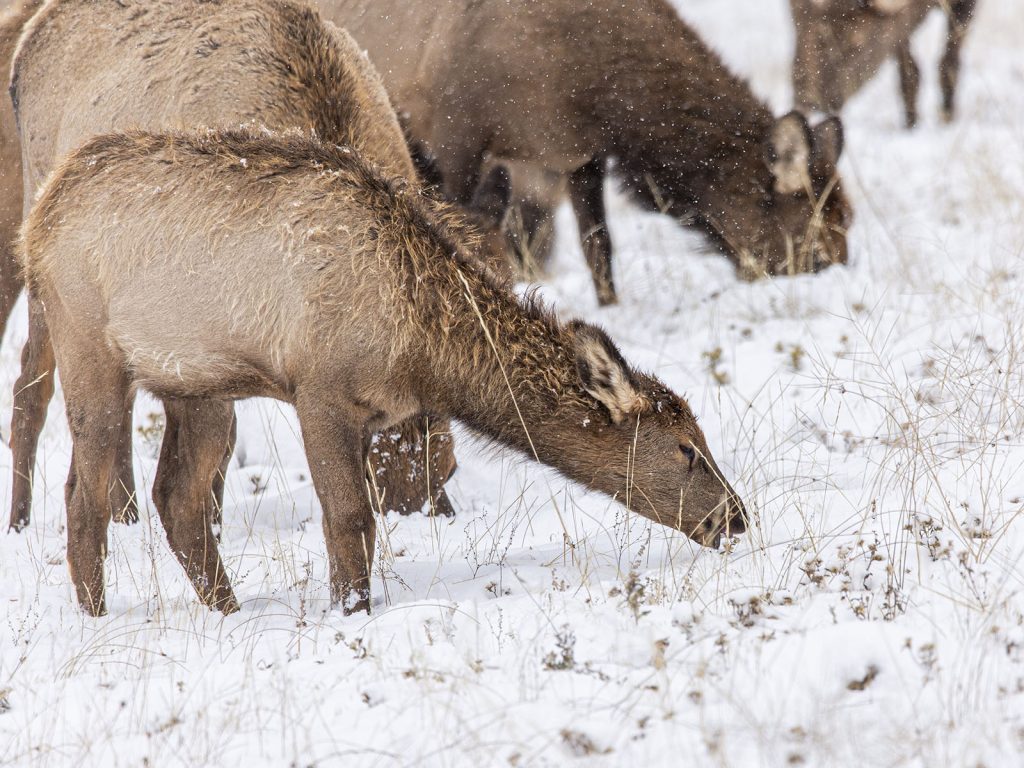
In some areas, this late season migration begins as early as November, and the winter snows can often keep the elk in their wintering grounds until late March or early April. The concentration of elk herds during the winter months can bring a concentration of predators as well, which can cause excessive stress on elk herds. Without sinking their teeth into the elk, predators can still cause a higher rate of mortality, simply by the physical stress they place on the elk during the harsh winter months.
As the winter months begin to give light to spring, the days get longer and temperatures begin to rise. This begins to melt some of the winter snow and provides fresh, green grasses that will begin to push up through the thawing ground. Fresh grass in late March and into April is a welcomed treat to the elk herds that have been living off dead grass and branches throughout the winter. The elk follow the receding snow lines back up the mountain, foraging on the new grass and forbs as they emerge. They begin to shed their heavy coats of winter hair, and the bulls begin to shed their antlers during this time as well. For the next several weeks, the elk replenish their bodies with this much-needed nourishment.
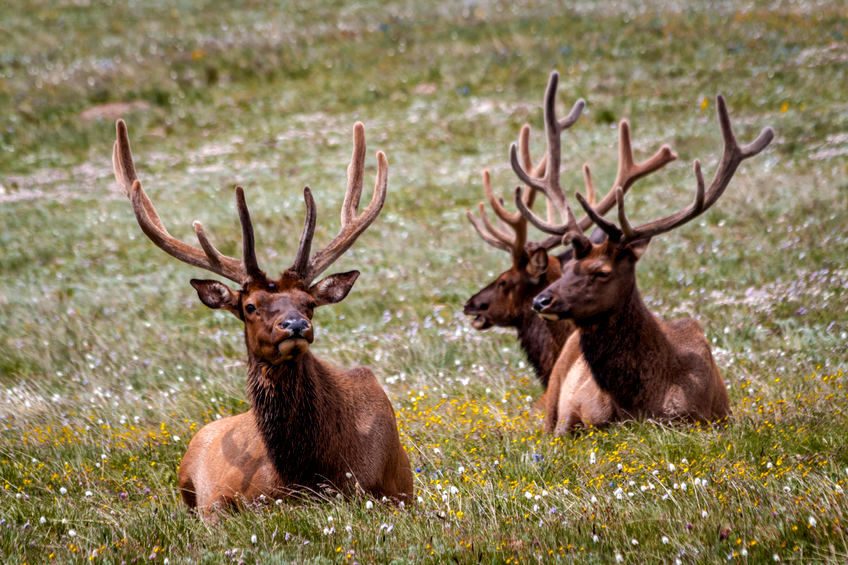
Throughout the months of April and May, the elk follow the snow levels back up to the high country, where cooler temperatures and fewer bugs will pester them throughout the summer months. The more mature bulls are still in bachelor herds, and usually lead the way back to the high country, while the cows and smaller bulls linger slightly behind where there is more abundant green grass. Soft, velvet antlers begin to sprout from the pedicles of the bulls soon after they shed their previous set of antlers.
Toward the end of May and into the first weeks of June, and after an eight to eight-and-a-half month gestation period, the cows begin to give birth to the calves they have carried throughout the winter. Cows will often return to the same calving areas year after year, weather permitting.
These calving areas provide ample feed for the grazing herds, as well as suitable protection for the helpless calves. On years where there has been a large snowfall, or where the snowfall has come late, the cows may not be able to make it back to their preferred, traditional calving grounds. This is an important piece of information, as it can have an effect on where the rut takes place in the coming fall. I’ll be sharing more detail on this situation a little later.
These calving areas are often a vital component in helping determine where the rut will take place – at least initially – in the fall. Just as there are preferred calving grounds, there are annual rutting areas where the bulls will return to each fall for the rut. And these two areas are closely linked. Once cows find a suitable area to have their calves, they typically stay in that general area throughout the summer months. The cows stay herded up in “nursery” herds where several cows and calves spend the summer feeding. During these months, it isn’t uncommon for the elk to travel greater distances as they move from feeding areas to safe, cool areas to bed. The main herds will often stay in these same areas throughout the summer, and can be quite easy to pattern.
During the summer, the bulls are usually at higher elevations, feeding on the abundant grasses and brush and protecting their rapidly growing antlers. They are still grouped up in their bachelor herds, and for the most part, are tolerant of each other’s company. As the days begin to get shorter though, their tolerance decreases.
In early to mid-August, the bulls begin to split up from their bachelor herds and seek solitary refuge in staging areas. These staging areas – which I also refer to as a “bull’s bedroom” – place the bulls closer to the rutting grounds, and give them an opportunity to rub their antlers on trees to remove the velvet and strengthen their neck muscles for the upcoming battles they will engage in. Oftentimes, there will be multiple rubs and beds within a very small area. There is usually adequate feed and water very close by, and the bulls don’t need to travel far.
During this time, the mature bulls aren’t looking for any company, and can become quite irritable as their testosterone levels surge. This is the first phase of the pre-rut, and can be an effective time to find an irritable herd bull without the protecting eyes, ears, and noses of a herd of cows. Additionally, during this early part of the pre-rut, the bulls haven’t been pressured by hunters for several months, which can make them less wary than they will be four weeks later. As this early phase shifts into the latter part of the pre-rut, the dynamics of the elk herds change drastically.
During the first part of September, the solitary bulls begin to make their way closer to the cows. The cows are typically still in the same general areas where they had their calves, which means that if they were forced to calve at lower elevations due to the late or long winter, they rut activity may take place at a lower elevation than it would on a normal year.
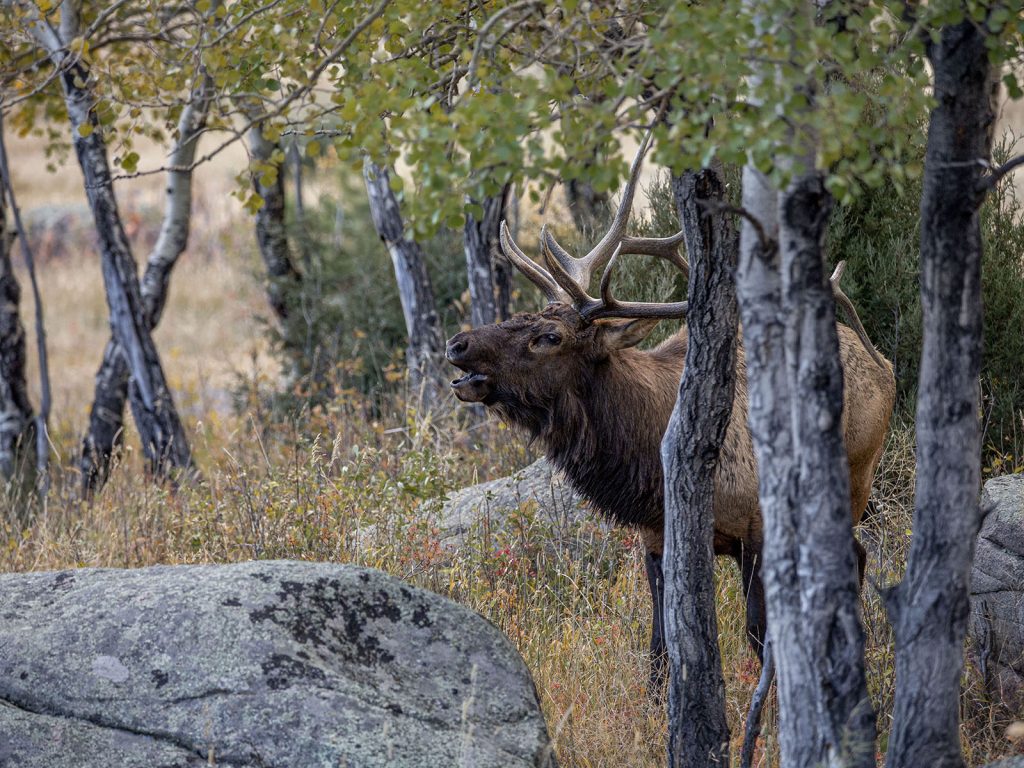
The “herd” bulls head out in search of the herds and will often arrive at these locations around the same time, which I’ve found to be the most effective time to hunt herd bulls. It is right before they have established their harems, but they are in a fighting mood and very receptive to calling, especially aggressive calling from another potential herd bull.
Once the herds are established, the herd bulls will often try to move the cows away from the other harems to reduce competition and the risk of losing cows to another bull. The bulls will be quite vocal during this time and into the peak rut, which is when the actual breeding of the cows takes place. The “peak rut” – the time when the majority of cow elk are bred – is usually within 7-10 days of the Fall Equinox, which is usually around the 3rd week of September. Cows will come into estrus during this time, usually for just 24-48 hours. If they aren’t bred during this estrus cycle, they can cycle again around 4 weeks later. During the peak rut, the bull’s focus is primarily on breeding the cows as they come into estrus.
Once the rut winds down, the bulls again retreat to their hidey holes where they can recuperate from the physical effects of the rut and quickly rebuild strength and energy for the approaching winter.
Understanding the lifecycle of an elk might seem very basic and elementary. However, understanding what elk are doing – and why they are doing it – throughout all times of the year can be quite helpful in September and October. Understanding that mature bulls haven’t been pressured much throughout the summer months, and that they are very irritable in late August and early September, can be a great recipe for someone looking at targeting a larger bull before the rut kicks in. If you remember that the long, hard winter from several months before could be a primary reason why you aren’t finding elk in their normal rutting areas, you can quickly regroup and locate the elk at a lower elevation.
THE SURVIVALISTS
Thinking like an elk, and understanding how an elk thinks throughout the year, can be a valuable asset to employ as you hunt elk in the fall. Understanding not only what they do, but why they do it, is definitely important. Ultimately, elk are survivalists. The need food, water, and cover, and they need to stay off the menu of the ever-present predators – whether two-legged or four. Aside from their predictable habits and annual patterns, they also employ one of the most finely-honed senses of survival. And in order for us to be able to successfully hunt them, we need to understand how their senses keep them alive.
Sun Tzu, the great Chinese military general and strategist said, “If you know the enemy and know yourself, you need not fear the result of a hundred battles. If you know yourself but not the enemy, for every victory gained you will also suffer a defeat. If you know neither the enemy nor yourself, you will succumb in every battle.” Interestingly enough, he made several comments that I find very applicable to elk hunting. But this one of knowing your enemy – or your opponent – resonates with me. Let’s get to know our opponent’s strongholds, and what it is that keeps them alive and makes them so difficult to get close to.
ELK SENSES
Elk utilize three main senses to help them detect and escape danger: sight, sound, and smell. Of the three senses, elk rely most on their sense of smell. You can get away with being seen once in a while. You can make some sound and still be okay. But if an elk smells you, it is over.
The first two senses of sight and sound might be somewhat secondary to smell, but they are definitely worth understanding and paying attention to. Elk have incredible hearing, and can pinpoint the location of a sound with amazing accuracy. However, there are many sounds that get filtered into their ears every day, so sound in and of itself is not necessarily bad. An elk that is on high-alert and trying to recognize a sound though, is a tough opponent.
Breaking branches, raking trees, and normal elk sounds don’t necessarily alert an elk to danger, but human voices or coughing, boots scuffing on rocks or trees, or clothing rubbing against trees, can. If you are going to be making sounds, make sure they are natural sounds. And know that if you make sounds, the elk will know exactly where you are. If you are a caller back behind the shooter, that is OK. If you are a shooter out in front hoping to maintain the element of surprise, or stalking closer to an unsuspecting elk, ANY sound can give away your presence and your exact location.
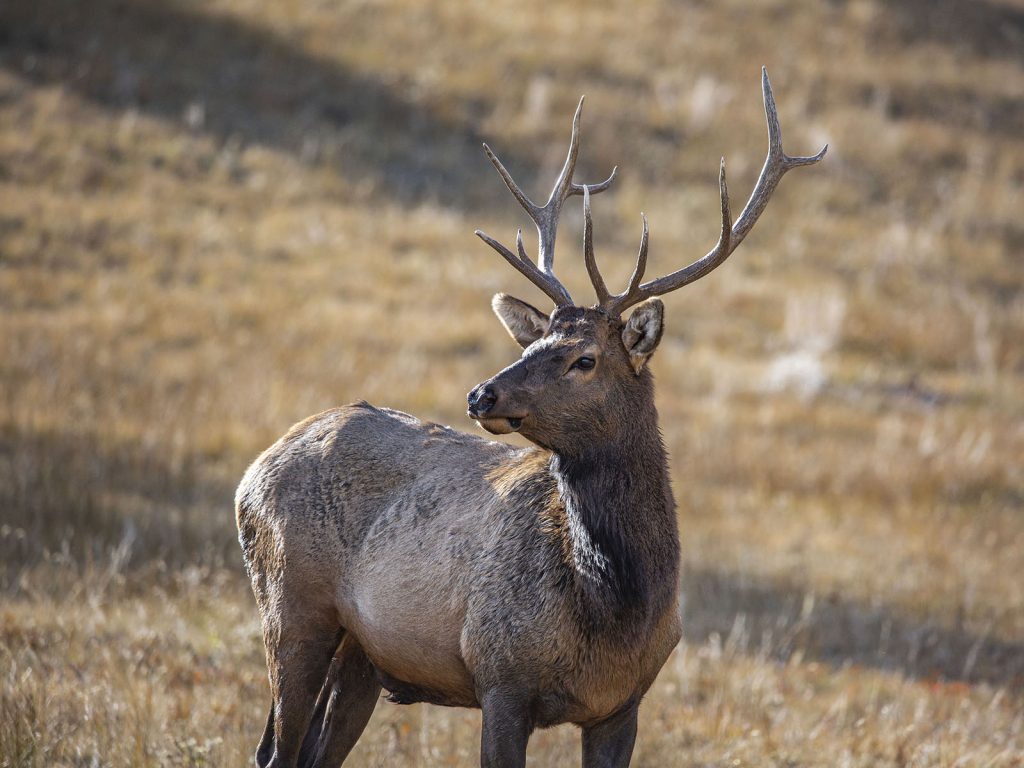
When it comes to sight, elk aren’t endowed with precise vision. In fact, they see around the human equivalence of 20-60. Additionally, they don’t see the full color spectrum humans do. Elk vision is dichromatic, which means their world is seen in two colors, not trichromatic like our vision. There is a whole science to ungulate vision, but to keep it simple, just know this. Elk don’t have a red cone like humans, so the upper end of the color spectrum appears yellowish to elk. They aren’t color blind, but they don’t see color the way we do.
At 20-60, their vision is more tuned to picking up on shapes and high-contrasting objects, not on detail. Elk are also able to see nearly 270 degrees without moving their head, which means they can see the slightest movement, even if it is somewhat behind them. Because of these two factors, there are two important things to keep in mind: limit (or eliminate) movement, and use your surroundings to blend in. If you follow this simple formula when hunting elk, it will greatly reduce the chances of the elk picking you out with their eyes.
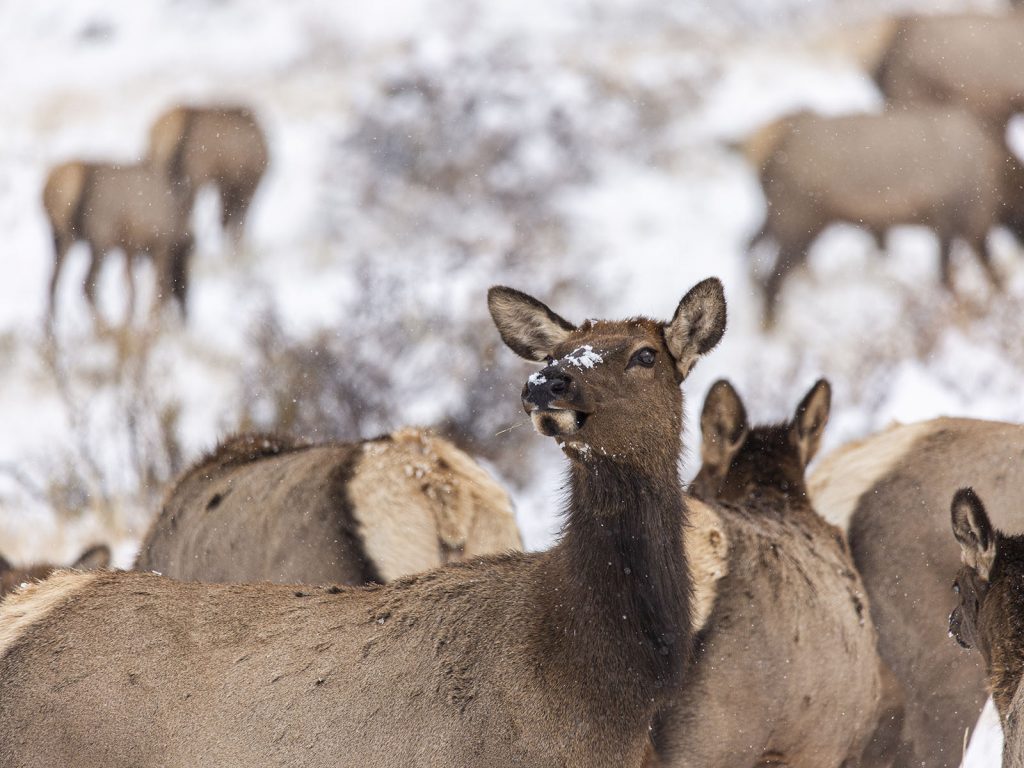
The last, and most important, sense I’ll discuss is that of smell. Elk have thousands of scent receptacles in their noses, and are able to detect the presence of danger at over half-a-mile away. They absolutely rely on their noses. I can remember walking upon the rotting carcass of a beef cow in Arizona several years ago. I was over 300 yards downwind from the carcass that had spent the better part of a month soaking up the Arizona heat, and the stench was gagging me. I tried to breathe through my mouth to prevent the instant gagging a nose-breath caused, but it was to no avail. The only option I had was to hurry and get upwind from the source. I mentioned to my hunting partners that this experience was probably what it was like for an elk that was 300 yards downwind from us. As sensitive as their sense of smelling is, I would imagine that they aren’t getting a slight whiff of our scent, but rather, a nose-full of human stink!
Because of their acute sense of smell, it is vital that you pay attention to the direction the wind and thermals are moving at all times. They change continually, which means you must be constantly monitoring and willing to change as well. If you don’t pay attention to the wind, your chances are cut in half immediately. And that’s best case. I cannot stress enough the importance of paying attention to the wind. You must do it continually, because I promise you that the elk are.
In the next Chapter, I’ll go into more detail about what an elk’s daily habits are, and how their sense of smell – coupled with their other senses and their will to survive - actually shapes much of their activity throughout the day.
If you’re ready to proceed, Click ‘Next Chapter’ Below





